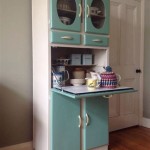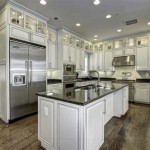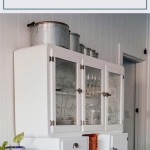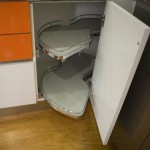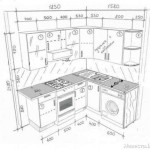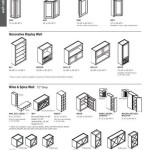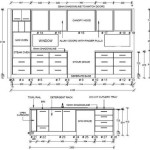1970s Kitchen Cabinets: A Retrospective on Design and Materials
The 1970s represented a distinct era in kitchen design, characterized by a departure from the sleek, modern aesthetics of the mid-century and a move towards warmer, earthier tones and more natural materials. Kitchen cabinets during this decade reflected these trends, showcasing a diverse range of styles, materials, and hardware. Understanding the prominent features of 1970s kitchen cabinets provides insight into the design sensibilities of the time and can inform renovation or restoration projects aimed at capturing or updating this iconic look.
The design aesthetic of the 1970s was largely influenced by the burgeoning environmental movement and a desire for a more relaxed, informal lifestyle. This translated into kitchen designs that emphasized functionality and comfort, with cabinets playing a pivotal role in creating a welcoming and practical space. While styles varied considerably, certain characteristics were consistently present across the decade, shaping the overall look and feel of 1970s kitchens.
Key Materials Used in 1970s Kitchen Cabinets
One of the most defining aspects of 1970s kitchen cabinets was the selection of materials. Wood, both solid and veneer, was a dominant choice, reflecting the growing appreciation for natural elements. Oak, particularly red oak, was exceptionally popular due to its distinctive grain patterns and durability. Pine, with its lighter color and rustic charm, was another common option, often stained or varnished to enhance its natural beauty.
Beyond solid wood, wood veneer cabinets gained traction as a cost-effective alternative. These cabinets typically featured a thin layer of real wood adhered to a substrate such as particleboard or plywood. Veneer cabinets offered a similar aesthetic to solid wood at a lower price point, making wood-look kitchens more accessible to a wider range of homeowners. The underlying substrate often determined the cabinet's overall durability and resistance to moisture, a factor to consider when evaluating vintage cabinets.
Laminate cabinets, while less prevalent than wood, also appeared in 1970s kitchens. These cabinets were typically constructed with a particleboard core covered in a plastic laminate surface. Laminates offered a variety of colors and patterns, including wood-grain imitations, providing a versatile and easy-to-clean option. While laminate cabinets were often more affordable than wood, they were also generally less durable and prone to chipping or peeling over time.
The hardware used on 1970s kitchen cabinets further contributed to the overall design aesthetic. Pulls and knobs in materials such as brass, chrome, and wood were common. Brass hardware, in particular, was highly sought after, often featuring intricate designs and adding a touch of warmth to the kitchen. Wood knobs and pulls complemented the natural wood tones of the cabinets, creating a cohesive and unified look. The size and style of the hardware often reflected the overall design of the kitchen, ranging from simple and minimalist to ornate and decorative.
Dominant Color Palettes and Finishes
The color palettes of 1970s kitchen cabinets were strongly influenced by the earth tones that defined the decade. Browns, oranges, yellows, and greens were ubiquitous, reflecting a desire for a warm and inviting atmosphere. Avocado green, harvest gold, and burnt orange were particularly popular choices, often appearing in combination with natural wood finishes. These colors created a sense of nostalgia and a connection to the natural world.
Natural wood finishes were highly favored, showcasing the inherent beauty of the wood grain. Clear varnish, stain, and oil finishes were used to enhance the color and texture of the wood, allowing its natural character to shine through. Darker stains, such as walnut or mahogany, were also used to create a more sophisticated and traditional look. The choice of finish often depended on the type of wood and the desired aesthetic. For example, pine cabinets were often stained with a honey-colored finish to enhance their warm tones, while oak cabinets might be finished with a clear varnish to highlight their grain pattern.
Painted cabinets were less common than wood-finished cabinets during the 1970s, but they did appear in some kitchens, particularly in lighter colors such as white, cream, or pastel shades. These colors helped to create a brighter and more airy space, contrasting with the darker earth tones that were prevalent in other areas of the kitchen. Painted cabinets were often paired with colorful countertops and backsplashes to create a vibrant and eclectic look.
Textured finishes also gained popularity during the 1970s, adding visual interest and depth to kitchen cabinets. Embossed wood grain and faux-wood finishes were used to create a more tactile and realistic appearance. These finishes helped to mask imperfections and added durability to the cabinets. Textured laminates also offered a range of patterns and colors, providing a versatile and affordable option for homeowners.
Common Design Features and Styles
The design features of 1970s kitchen cabinets were characterized by a focus on functionality and practicality. Cabinets were often designed with ample storage space, including drawers, shelves, and pull-out organizers. The goal was to create a kitchen that was both efficient and easy to use. The layout of the cabinets was also carefully considered, with an emphasis on creating a logical flow and maximizing workspace.
Raised-panel door styles were a prominent feature of 1970s kitchen cabinets, adding depth and dimension to the design. These doors typically featured a central panel that was slightly raised above the surrounding frame, creating a visually appealing effect. Recessed-panel doors, which featured a central panel that was set slightly below the surrounding frame, were also common. The choice of door style often depended on the overall design of the kitchen, with raised-panel doors being more traditional and recessed-panel doors being more contemporary.
Framed cabinets were the standard construction method during the 1970s. These cabinets featured a face frame that was attached to the front of the cabinet box, providing structural support and creating a decorative element. Framed cabinets offered a more traditional look and allowed for a variety of door styles and hardware options. Frameless cabinets, which lacked a face frame, were less common during the 1970s, but they did begin to gain popularity towards the end of the decade.
Decorative details, such as scalloped edges, carved moldings, and decorative inlays, were often used to enhance the appearance of 1970s kitchen cabinets. These details added a touch of elegance and sophistication to the design, reflecting the growing interest in craftsmanship and artistry. The choice of decorative details often depended on the overall style of the kitchen, with more traditional kitchens featuring more ornate details and more contemporary kitchens featuring simpler details.
Open shelving also appeared in some 1970s kitchens, offering a way to display decorative items and store frequently used items within easy reach. Open shelving was often used in combination with closed cabinets to create a more balanced and visually appealing design. The items displayed on open shelves often reflected the homeowner's personal style and interests, adding a touch of personality to the kitchen.
The impact of appliance integration was beginning to be felt in kitchen design during the 1970s. While fully integrated appliances were not yet commonplace, there was a growing trend towards incorporating appliances seamlessly into the overall kitchen design. Cabinets were often designed to accommodate built-in ovens, refrigerators, and dishwashers, creating a more streamlined and cohesive look. This trend reflected a growing desire for convenience and efficiency in the kitchen.
The characteristics of 1970s kitchen cabinets offer a valuable perspective on the design trends and material preferences of that era. By understanding these features, individuals can better appreciate the aesthetic sensibilities of the time and make informed decisions when renovating or restoring kitchens from this period.

Kitchen Makeover Plans Bye 1970 S 1970s Remodel Budget Small

Need Ideas For 1970 S Oak Kitchen Cabinet Update

Kitchens Through The Decades Atlantic Ping

How To Modernize Your Vintage Kitchen

Updated Outdated 1970 S Cabinets Filled The Grooves Added Trim Painted And New Hardwa Redo Kitchen Old

Kitchens Through The Decades Kitchen Trends Time

1970s Kitchen Makeover By Junk Love Boutique Remodel Layout Cabinets Simple

Those Fabulous And Frightening 1970s Kitchens Flashbak

1970s Kitchen Makeover By Junk Love Boutique Hometalk

How To Update A 1970s Kitchen On Budget The Granvillian
Related Posts

